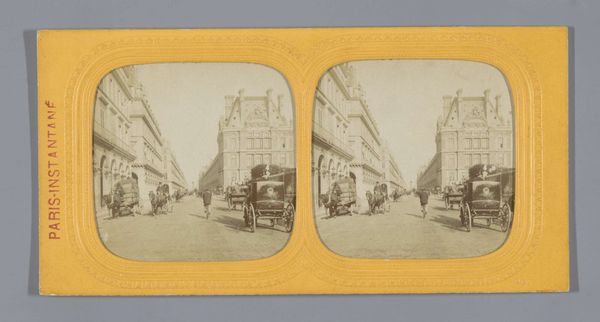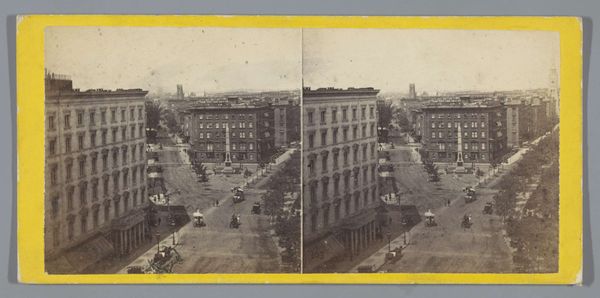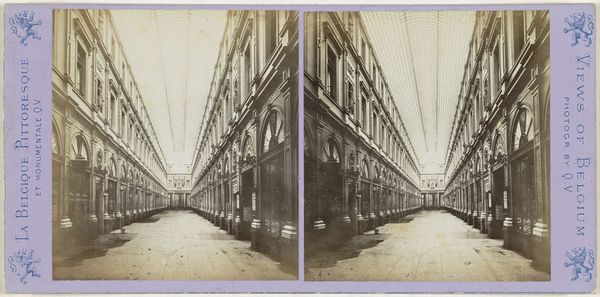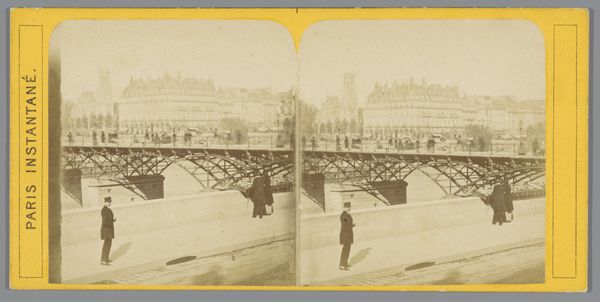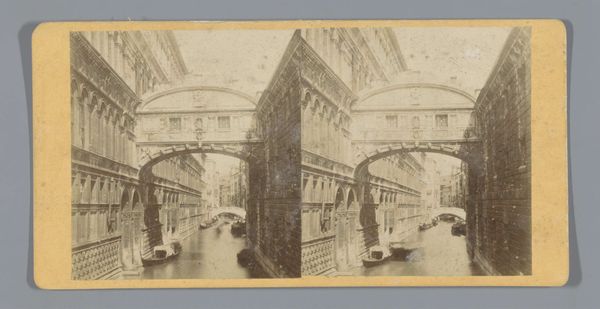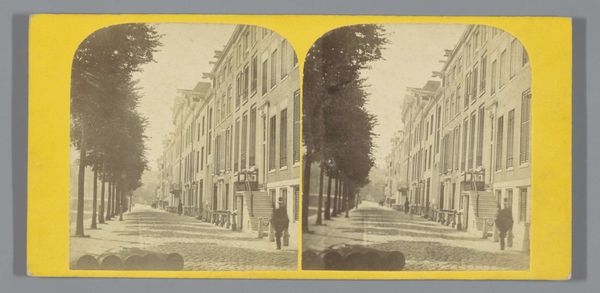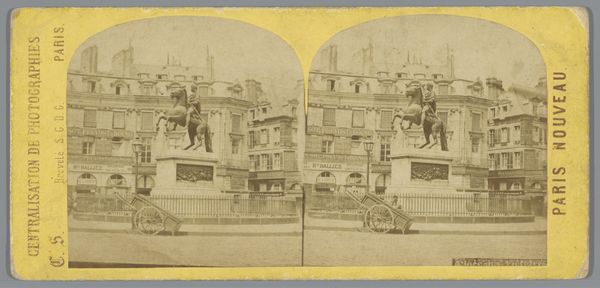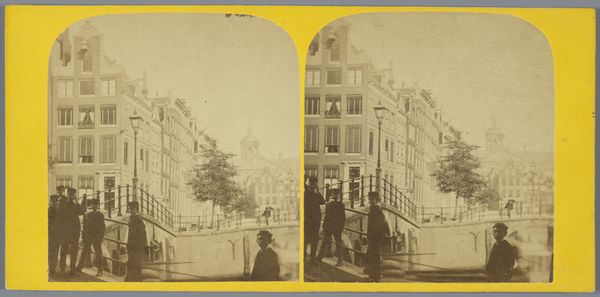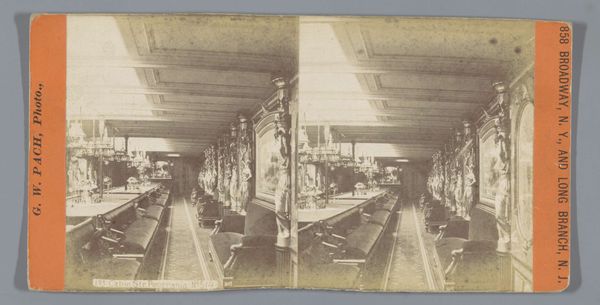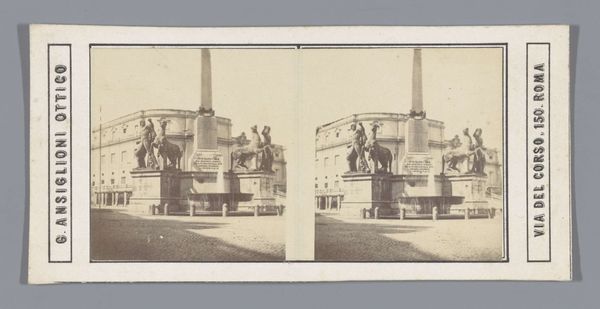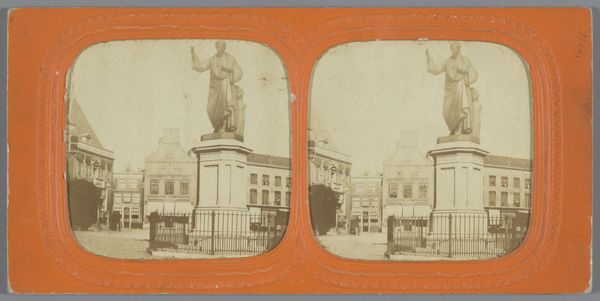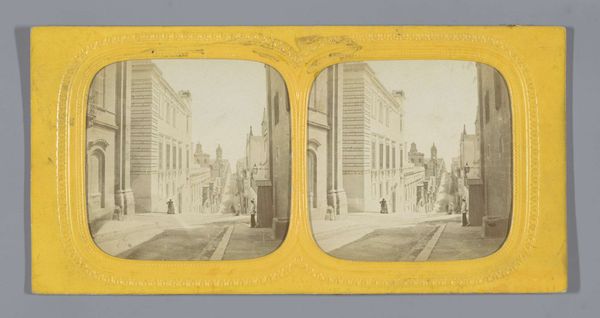
Palace of Westminster met een standbeeld van Richard I van Engeland in Londen c. 1850 - 1880
0:00
0:00
photography
#
landscape
#
photography
#
cityscape
Dimensions: height 85 mm, width 170 mm
Copyright: Rijks Museum: Open Domain
Curator: Looking at this photograph, "Palace of Westminster with a Statue of Richard I of England in London," captured anonymously between 1850 and 1880, now residing in the Rijksmuseum, what strikes you most? Editor: Immediately, I notice how the grand Palace and statue, typically symbols of power and permanence, seem softened, almost ethereal, by the photographic process. The tones are muted, creating a feeling of distance and perhaps a hint of melancholic reflection on British history. Curator: That's a compelling observation. It invites us to consider how photography, even in its early stages, shapes our understanding of power and identity. Richard I, a king celebrated for his military prowess, is here represented by statuary, placed in front of the centre of government. Editor: Yes, Richard I is iconic in the stories that Britain tells about itself. Statues speak volumes – even their placement sends a message about whose stories get told. He’s literally elevated above us, which traditionally signifies importance, a point of access into this very British world. Curator: Precisely. Consider, too, the time period. Mid-19th century London was grappling with massive social change. Photography offered a seemingly objective way to document that reality. This cityscape becomes a stage on which ideas about national identity, class, and progress are being debated. We can also examine the role the government buildings themselves play within the British identity. The Palace looms over the common citizen. Editor: And that raises a critical point about accessibility, or rather, the lack thereof, both physically and metaphorically. This photographic rendition, through its slightly softened focus and faded tones, perhaps unknowingly critiques that grand narrative, hinting at the fragility and constructed nature of such power structures. Even if that's not what was intended at the time. Curator: Indeed, it's a poignant reminder that even images intended to project authority and stability are inevitably subject to interpretation and can unintentionally reveal the cracks within established power dynamics. Considering that, this image serves as a point of entry into many narratives that extend past itself. Editor: For me, the power lies in the contrast: the monumentality of the architecture set against the fleeting nature of the photographic medium. I think the image reminds us to question the seemingly fixed symbols and stories that shape our world.
Comments
No comments
Be the first to comment and join the conversation on the ultimate creative platform.
